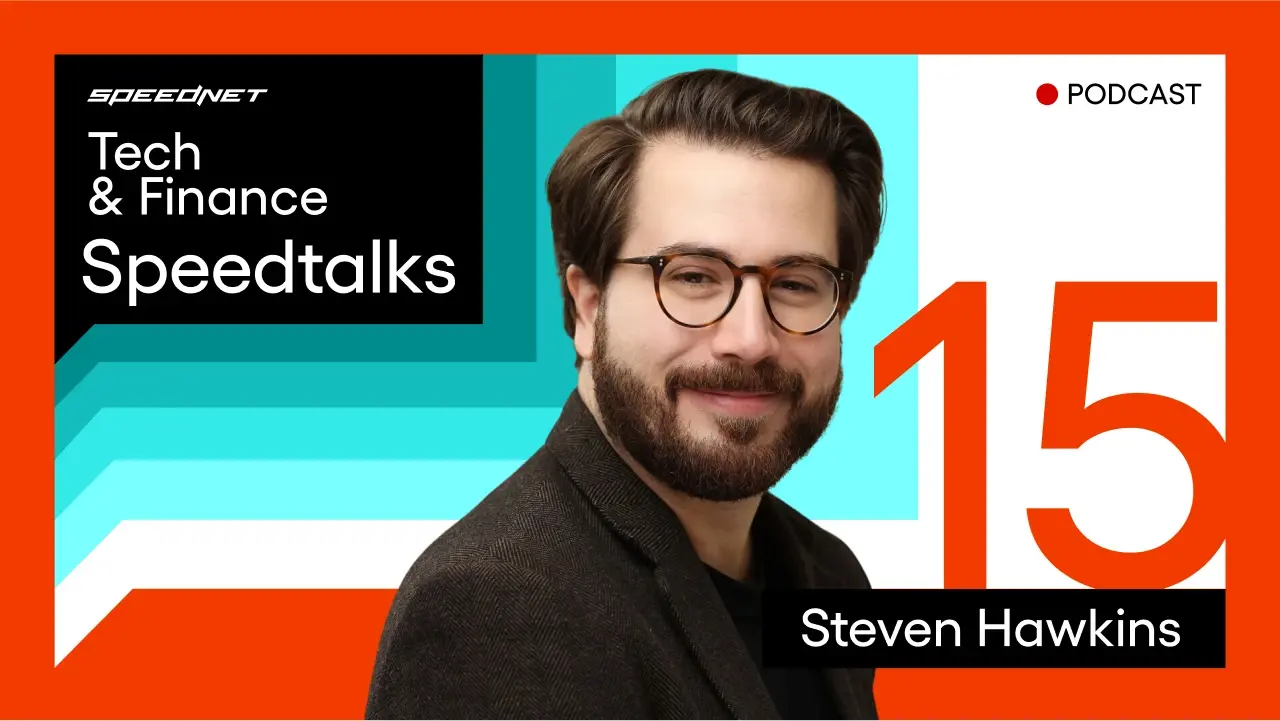017: What is transactional data enrichment?


Hello & welcome to Speedtalks – a podcast about everything tech in the financial services industry. I’m Michael and today, we are driving into a topic that’s quickly revolutionising the way we understand our money – transactional data enrichment.
You may have already seen the results of this technology without realising it – when your bank statement shows a clear merchant name, a logo, a spending category, or even the location of your purchase. Behind these seemingly simple improvements lies a powerful technology designed to turn messy, raw transaction data into information that’s genuinely useful.
In this episode
Today, we’ll break down:
- What data enrichment really is,
- Why raw transaction data isn’t enough,
- And how enriched data is revolutionising everything – from user experience and fraud prevention to personalised financial services.
Whether you’re working in fintech, digital banking, or you simply want to better understand your own finances, this episode will offer a fresh perspective on the invisible tech shaping our everyday transactions. Let’s get started.
What is transactional data enrichment?
Let’s begin with a question: Do you actually know where your money goes? And – does your bank?
By the end of this episode, you’ll be able to confidently answer both.
Put simply, data enrichment is the process of transforming raw financial data – primarily your transaction records – by layering on additional, meaningful information. The goal? To make that data easier to understand and significantly more valuable for you as a customer.
The problem with raw transaction data
Raw transaction data can often be:
- Inconsistent,
- Abbreviated beyond recognition,
- Full of duplicates or unstructured entries.
This makes it incredibly difficult to interpret. Let me share a personal example.
I once saw a transaction in my banking app that looked like a random string of characters. I recognised the amount and had a rough idea of when the payment occurred but no clue what I had actually paid for. I nearly called customer support to block my card or report fraud. It turned out it was just a concert ticket.
Another time, after returning from an event abroad, I spotted a strange transaction in my app: a charge labelled “XYZ XYZ, Copenhagen”. I panicked, thinking someone had skimmed my card. Eventually, I traced it back to a food delivery app. Their acquiring service was based in Copenhagen, hence the odd location. I had to sift through emails and invoices to confirm that.
Wouldn’t it be much easier if transactions were instantly recognisable?
How data enrichment solves this
Data enrichment transforms cryptic, unclear transaction messages into clear, human-readable entries. Instead of “XYZ1234.PL”, your app might now show: “£4.00 – Starbucks (Your location)”. Here are the key elements that enriched data adds:
- Clean, recognisable merchant names: no more confusing codes or abbreviations – just straightforward, accurate names like Uber Eats, Amazon, or Tesco.
- Logos and branding: visual cues help users instantly identify familiar brands, increasing trust and understanding.
- Categorisation of spending: automatically sorts transactions into categories like groceries, transport, entertainment, etc.
- Purchase location: shows where a purchase was made, helping users verify transactions more easily.
What’s in it for the banks?
Unclear transactions lead to customer confusion, and often, calls to the help centre. Our data shows that enrichment can reduce support queries by 47% and chargebacks by 52%. Clear, enriched data helps users understand and trust their financial data. As a result, we’ve observed a 48% increase in app engagement where enrichment is used. More context around transactions makes it easier to detect unusual or suspicious activity quickly.
Enriched data enables banks to:
- Recommend relevant products (e.g., fuel cards based on petrol station visits)
- Segment customers by behaviour (e.g., high spenders vs. budget-conscious users)
- Tailor offers that increase satisfaction and loyalty
How the enrichment process works
Let’s walk through the basic stages of the data enrichment pipeline. The process begins with accessing raw transaction data – always with the user’s permission. Banks don’t format data consistently. So the first step is to:
- Identify the nature of each transaction (e.g. debit, credit, fee),
- Remove noise,
- Standardise formats across banks.
This is where the magic happens. The platform compares each transaction to a massive merchant database, enriched with:
- Official merchant names
- Categories
- Logos
- Locations
Our systems achieve a 99% match rate in most cases. Think of transactional data enrichment as a sort of Google Translate for financial data – turning confusing code into clear, actionable insights.
Why should customers and banks care
For customers
- Makes managing money clearer, easier, and less stressful
- Reduces the risk of panic over unfamiliar transactions
- Saves time avoiding unnecessary calls or disputes
For banks and fintechs
- Enhances customer experience and trust
- Reduces operational costs
- Enables modern, personalised services
- Builds a competitive advantage
In today’s digital-first world, banks that don’t offer enriched data risk losing customers to more innovative rivals like Revolut, Monzo, or Starling Bank.
Final thoughts
If your organisation is still working with raw, unclear transaction data, it might be time to re-evaluate. You could be losing both money and customers.
Want to learn more about how we can help? Fill out the contact form and ask away – we’d love to talk.
Thanks for listening, and we’ll see you in the next episode of Speedtalks.




